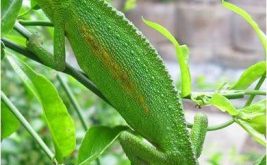Name: Eastern imperial eagle
Scientific name: Αquila heliacal
Family: Accipitridae
Description
They have a brownish-black plumage with a pale yellow-yellow head and neck. They have two white spots on their backs. The wings have been shown solely to give a sense of proportion. They have great muscle strength.
Habitat
The Imperial Eagle exists in various countries such as Austria, Azerbaijan, Bulgaria, China, the Czech Republic, Macedonia, Georgia, Greece, Hungary, Kazakhstan, Russia, Serbia, Slovakia, Turkey and Ukraine and many more. It is sparsely distributed from central, southern and eastern Europe, east to Lake Baikal (Russia).
They prefer to live at low altitudes but after constant persecution they now prefer the higher ones. They build a large nest at the top of the stick style tree. In winter they live mainly in wetlands. It is worth noting that in Cyprus there are only 2-4 couples, who live at the top of Troodos.
Reproduction
In early March-April, the search for a match begins, unless the eagles are already in the breeding area, starting in February. They usually lay eggs in late February, usually two to three eggs, very rarely one. Incubation lasts 37 to 43 days. The female feeds the newborn at the beginning and then stays close to the nest, transferring the food left by the male to a nearby tree. Newborns gain wings on the 14th day to the 55th they develop. They start standing on the 28th day and feed themselves on the 40th day. They start flying on the 60th day.
Food
They feed mainly on small to medium-sized mammals such as hares and hamsters but also attack birds such as pigeons and pheasants. Also, their diet rarely includes frogs and some large insects.
Risks
Very rare species, migratory with a serious risk of extinction. It is rare in the Red List of Endangered Animals. There has been a rapid decline in Europe over the last decade. There are also threats due to deforestation and the lack of endemic trees in the lowlands, the loss and deterioration of feeding habitats, lack of food, noise pollution in the places where they reproduce.
There are also risks of poisoning, electric shock from electricity cables, nest robbery, poaching, etc.
There is an urgent need to raise public awareness and involve stakeholders in conservation activities.
Sources:
[1] Βιβλίο «Πουλιά της Κύπρου» του Λουκά Χριστοφόρου, AFIAP, Λευκωσία 1998.
[2] Horváth M et al. 2010. Spatial variation in prey composition and its possible effect on reproductive success in an expanding eastern imperial eagle (Aquila heliaca) population. Acta Zoologica Academiae Scientiarum Hungaricae, 56, 187–200.
[3] HEREDIA, B. (1996, February) Retrieved 2013, from INTERNATIONAL ACTION PLAN FOR THE IMPERIAL EAGLE (Aquila heliaca)
[4] http://ec.europa.eu/environment/nature/conservation/wildbirds/action_plans/docs/aquila_heliaca.pdf
Image source:
http://el.wikipedia.org/wiki/%CE%91%CF%81%CF%87%CE%B5%CE%AF%CE%BF:Kaiseradler_Aquila_heliaca_2_amk.jpg
© AngMoKio
 Κυπριακό Κέντρο Περιβαλλοντικής Έρευνας & Εκπαίδευσης – Κυκπεε
Κυπριακό Κέντρο Περιβαλλοντικής Έρευνας & Εκπαίδευσης – Κυκπεε




